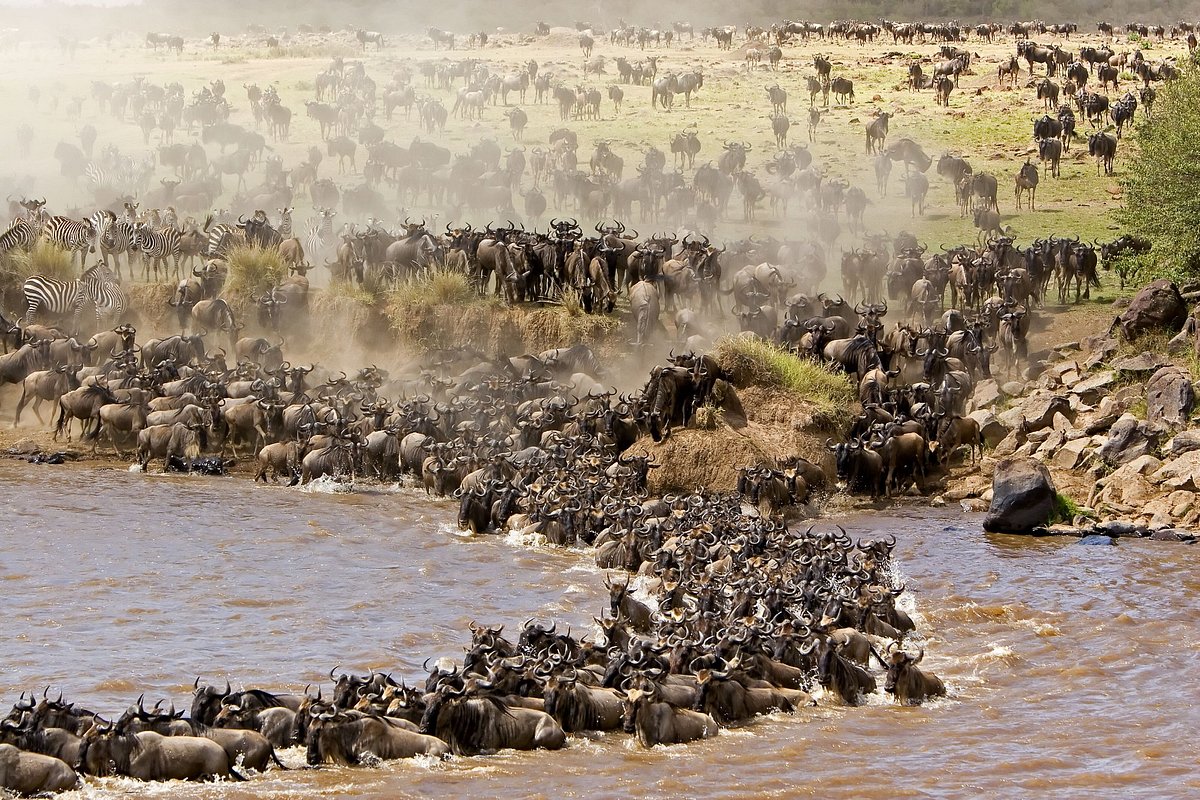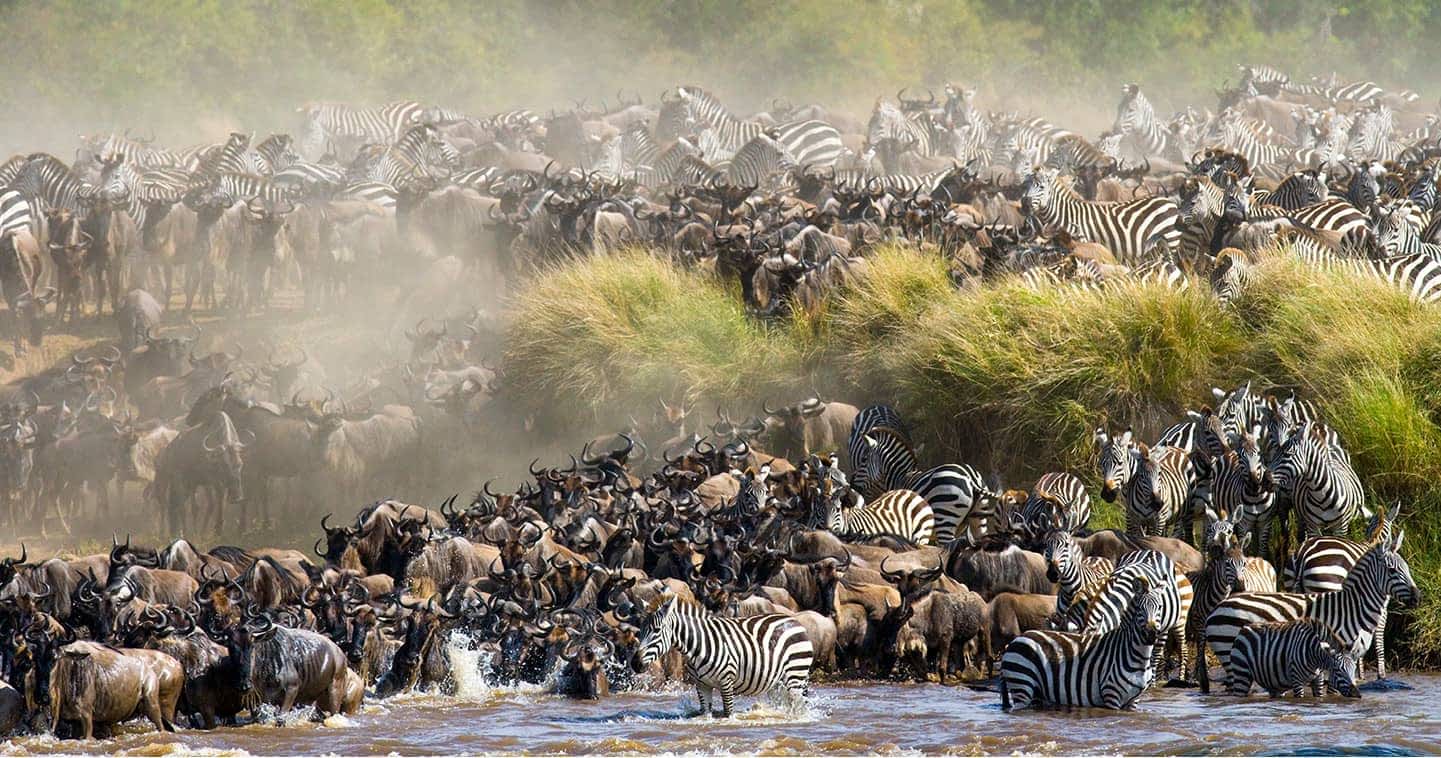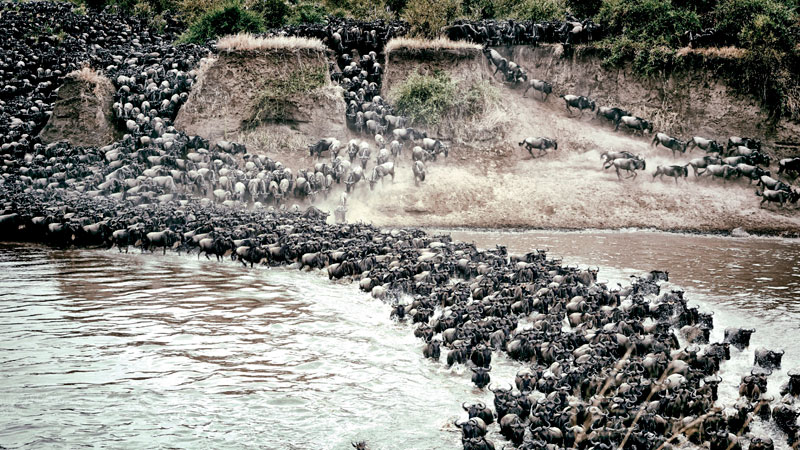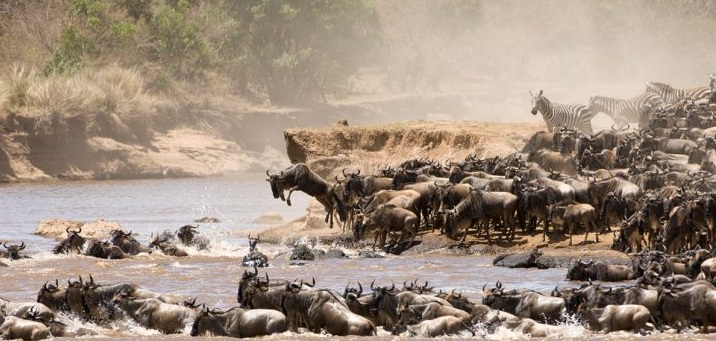
The Great Mara River
The Great Mara River is found in Kenya’s Masai Mara National Reserve, in the southwestern part of the country. It is a magnificent landscape known for its breathtaking savannahs and abundant wildlife. One of its most iconic features is the Great Mara River, a lifeline for countless animal species that call this region home. In this essay, we will explore the significance of the Great Mara River, its unique characteristics, and its role in the annual wildebeest migration, as well as the challenges it faces in an ever-changing world.
Description and Characteristics
The Great Mara River, also known as the Mara River, is a picturesque watercourse that meanders through the heart of the Masai Mara. It stretches approximately 395 kilometers, originating from the Mau Escarpment in the western highlands of Kenya and eventually joining Lake Victoria. The river boasts stunning landscapes, with banks adorned by dense vegetation and towering acacia trees.

One of the most distinctive features of the Mara River is its diverse ecosystems. It encompasses both lush riverine forests and vast open plains, creating a haven for a wide range of flora and fauna. The river serves as a primary source of water for an array of wildlife species, including elephants, hippos, crocodiles, and various antelope species. Additionally, more than 400 species of birds have been recorded along its banks, making it a paradise for bird enthusiasts.
The Great Wildebeest Migration
One of the most remarkable phenomena associated with the Mara River is the annual wildebeest migration. Each year, over two million wildebeest, accompanied by hundreds of thousands of zebras and gazelles, traverse the Serengeti-Mara ecosystem in search of fresh grazing grounds. The crossing of the Mara River is a crucial part of this arduous journey.
The wildebeest migration typically takes place between July and October when the herds gather near the banks of the Mara River. This spectacle attracts hordes of tourists and nature enthusiasts from all over the world, eager to witness the dramatic river crossings. As the herbivores attempt to navigate the treacherous waters, they face the ever-present danger of lurking crocodiles and the swift current. It is a test of survival, and only the fittest manage to cross unscathed.
Best place to see the wildebeest migration

Environmental Challenges
Despite its significance, the Great Mara River faces several environmental challenges that threaten its delicate balance. One such challenge is the increasing human population around the Masai Mara National Reserve. The demand for land, agriculture, and infrastructure development has led to deforestation, soil erosion, and pollution, all of which directly impact the river’s health and biodiversity.
Climate change also poses a significant threat to the Mara River ecosystem. Alterations in rainfall patterns and rising temperatures can disrupt the delicate balance of water availability, affecting both the river’s flow and the availability of food for wildlife. These changes may further exacerbate competition between wildlife and human communities for limited resources.

Conservation Efforts
Recognizing the importance of the Great Mara River, various conservation organizations, local communities, and government bodies have initiated efforts to protect this vital ecosystem. These initiatives focus on sustainable land management practices, reforestation programs, and community-based conservation approaches. Additionally, awareness campaigns and responsible tourism practices aim to minimize the negative impact of human activities on the river and its surroundings.

Conclusion
The Great Mara River is not only a stunning natural wonder but also a crucial lifeline for the diverse wildlife of the Masai Mara. Its presence shapes the lives of numerous species and plays a central role in the annual wildebeest migration, captivating visitors from around the globe. However, the river faces significant environmental challenges, necessitating collective efforts to preserve and protect its delicate balance. By promoting sustainable practices and fostering harmonious coexistence between humans and wildlife, we can ensure that the Great Mara River continues to thrive, enchanting generations to come with its beauty and significance.






